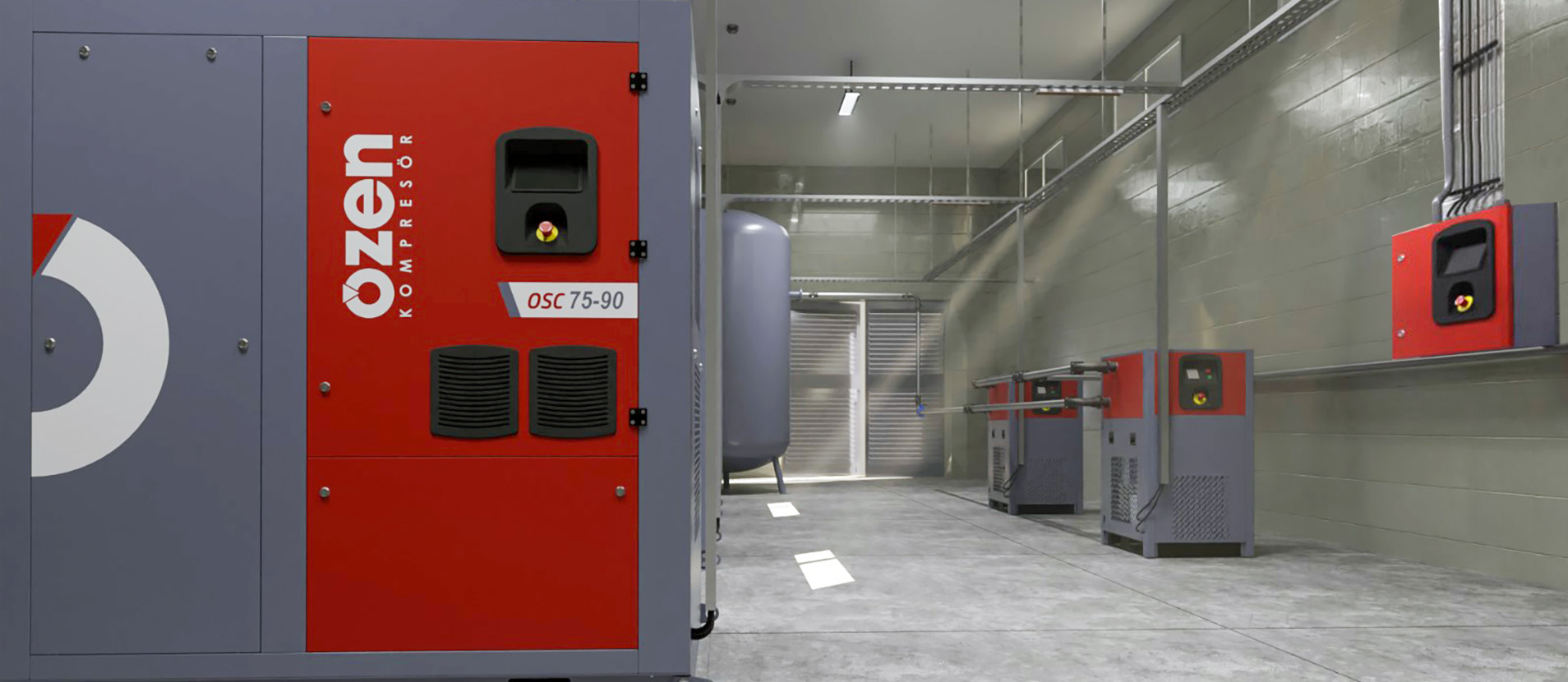How Should Your Enterprise's Air System (piping) Be Optimally?
22 January 2024, Monday

In enterprises, the compressed air system is a critical part of production and enterprise operations. Inadequate compressed air distribution systems can cause high energy bills, low productivity, and poor performance of air tools. Thus, it's important to understand how your enterprise's compressed air system needs to be for optimum performance.
As an analogy, the compressed air distribution system plays the same role as electrical wires in electrical systems. The air compressor is accepted as the source of voltage and pneumatic piping equipment is also marked as bulbs. If the wire thickness is too small to feed the bulbs, the wire will heat up, leading to a drop in the tension. Similarly, the compressed air system must be accurately sized and arranged.
It is critical to have a suitable distribution system for the compressed air system or electrical system; this provides energy savings and ensures that the aircraft operates in optimum condition.
There are three requirements for an accurate compressed air distribution system: a low-pressure drop between the compressor and the point of consumption, minimum leakage from the distribution pipes, and efficient separation if a drying compressed air dryer is not installed.
You will find information on what aspects to consider for the optimum performance of your enterprise's air system. We'll explore various topics of the compressed air system such as proper sizing, energy efficiency, deployment, and maintenance and we will offer valuable tips that enable you to make more informed decisions regarding your enterprise's air system.
Maintain a Low Pressure Between the Compressor and Consumption Point
Compressed air installations play a crucial role in industrial facilities and it is important to maintain a low pressure between the compressed air consumption point to increase efficiency and cost savings. It should be planned according to the main pipes and current needs in accordance with the compressed air consumption and future needs. Larger pipe sizes than initially required and the installation cost of the fittings are low when they are compared to the cost of later rebuilding of a compressed air piping system. Thus, the routing, design, and sizing of the air piping network are important to the efficiency, reliability, and cost of compressed air generation. The correct sizing and design of the compressed air installation is critical for optimum efficiency and cost-effective operation. Therefore, the pressure created in the installation can be kept low in accordance with the consumption points, and the system can be operated in a long-lasting and efficient manner. This approach not only reduces costs but also ensures continuous operation.

Constant pressure air distribution networks must be sized in such a way that the pressure drop in the pipes does not exceed 0.1 bar at the distance between the compressor and the point of consumption. Flexible connection hoses, hose fittings, and other assemblies should also be included in the pressure drop. It is especially important that these components are sized correctly because the greatest pressure drop usually occurs at these connections.
The longest allowable length in the compressed air pipe network for a given pressure drop can be calculated by using the following equation: l = total pipe length (m) ∆p = allowable pressure drop in the network (bar) p = absolute inlet pressure (bar(a)) qc = compressor Free Air Delivery, FAD (l/s) d = inner tube diameter (mm)
Sizing of Compressed Air (Piping) Network
Piping network sizing is critical to ensure optimum performance of the compressed air installation. The pressure obtained immediately after the compressor is usually not completely used because the compressed air distribution causes some pressure losses, most of these losses occur due to frictional losses in the pipes and the material of the compressed air pipe. In addition, gas shut-off effects and changes in the direction of flow occur in valves and pipe curves. Losses that cause a pressure drop are converted into heat. Thus, the sizing process of a compressed air network requires meticulous calculation of pipe diameters, valve types, slopes, and material selection. Also, accurate pressure drop calculations should be carried out so that losses are minimized over long distances. For a minimum pressure drop, a transportation line for suitable pipe diameters should be established while the generated air is transported throughout the factory site. All of these factors are important to ensure that the compressed air installation works efficiently and dependably. Therefore, the sizing process of a compressed air network must be meticulously planned and implemented by installation engineers.
